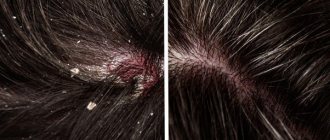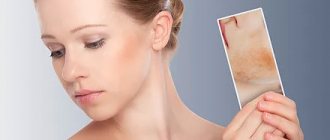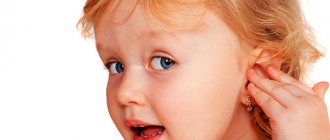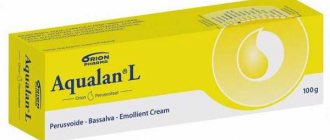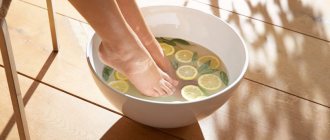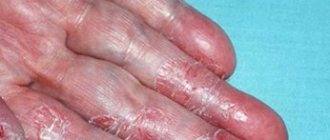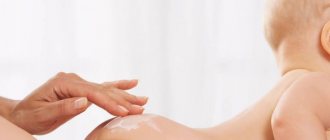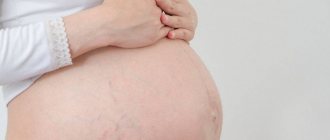Under the influence of various factors, the function of the sebaceous glands is disrupted; they begin to either produce sebum in excess or not enough. When it comes to disorders of the glands of the scalp, we speak of oily or dry seborrhea of the scalp.
What factors lead to disruption of the normal functioning of the sebaceous glands? This:
- Decreased immunity due to long-term chronic diseases, such as diabetes;
- Sudden changes in hormonal levels, for example in teenagers or pregnant women;
- Prolonged states of stress or depression;
- Metabolic disorders, such as obesity
- Other reasons.
Places where seborrhea appears: Many people believe that seborrhea occurs only on the scalp, but this is not so. Seborrheic dermatitis can affect any area of the skin where there are sebaceous glands.
- seborrhea of the scalp
Seborrhea of the scalp usually manifests itself as itching, flaking and dandruff. Dandruff in dry seborrhea is thin, translucent, and in oily seborrhea it appears as yellowish flakes. For seborrhea of this localization, treatment is usually carried out by a trichologist.
- seborrhea on the face
Seborrhea on the face occurs mainly during puberty and goes away on its own by the age of 25, but this does not mean that it does not need to be treated. The forehead, wings of the nose, nasolabial folds and chin, where most of the sebaceous glands are located, are most susceptible to damage. The process can also affect the growth areas of eyelashes, eyebrows, and mustaches.
- seborrhea on the body
On the torso, seborrhea most often affects the skin of the upper back and chest. The increased oiliness of these areas of the skin creates a favorable environment for the development of acne, causing physical and mental suffering to patients and reducing the quality of life.
What does dandruff look like?
White flakes, clearly visible on dark clothes, are nothing more than dandruff. It consists of scaly particles of keratinized skin, appears at the roots of the hair, and then easily falls off. Most often, the disease is provoked by the activity of the Malassezia fungus. It is present on the skin of every person, but only under certain conditions does it begin to multiply and cause dandruff.
When the fungus on the scalp becomes active, a person feels itchy. Depending on the reasons that caused the spontaneous reproduction of microorganisms and the characteristics of the sebaceous glands, seborrhea (this is what the disease accompanied by peeling is called) is divided into dry, oily, and mixed. It can also manifest itself in other forms.
Treatment of seborrhea
During treatment, your An-Tech Research Laboratories physician may recommend the following:
- adherence to the principles of healthy eating, including a special diet rich in proteins, plant foods and healthy fats;
- taking vitamins and minerals both separately and as part of complex preparations;
- refusal of aggressive effects on the skin that occur during hairdressing procedures - hair dyeing, lamination, perm or blow-drying;
- eliminating bad habits of smoking and drinking alcohol;
- use of special ointments for the skin;
- taking medications;
- physiotherapeutic procedures course.
All drugs and procedures for the dry form of seborrhea are prescribed only after a thorough history taking and the necessary research. The doctor may prescribe a scalp scraping, take hair tests, and examine the condition of the scalp under a microscope.
Dry seborrhea
If there is a lack of activity in the sebaceous glands, dry seborrhea can occur. The reason is not only low sebum production, but also:
- stress, anxiety, psychological shocks;
- hereditary factors;
- hormonal disruptions (puberty or abnormalities in the functioning of the glands);
- use of incorrectly selected cosmetics, as well as cosmetic paints with ammonia;
- poor hygiene, excessively frequent hair washing and blow-drying;
- lack of vitamins (this affects the general health and functioning of the glands).
A deficiency of sebum contributes to the appearance of inflammatory processes on the scalp, which provoke the proliferation of Malassezia fungi. Symptoms of dry seborrhea:
- discoloration, dryness and brittleness of hair;
- formation of cracks in the epidermis;
- the appearance of large scales that quickly peel off.
If measures are not taken, dry seborrhea moves into the next stage. In addition to dandruff, a person is bothered by redness of the skin and seborrheic spots. Sometimes dry seborrhea is an advanced form of oily seborrhea, in other cases the problem arises on its own.
Acne classification
A
.
Constitutional acne 1. Seborrheic acne in childhood adolescence and adolescence: - acne of newborns - acne of infants - juvenile acne 2. Late acne: - premenstrual acne - postmenstrual acne - late hyperandrogenic acne in women - conglobate cystic acne in
men
B. Provoked acne 1. Artificial acne (mechanical, traumatic) 2. Oil acne (including professional acne) 3. Cosmetic (can be considered as a contact variant, usually found in women 20-30 years of age who abuse cosmetics). 4. Excoriated (In most cases, it manifests itself in a mild form. Each new rash is squeezed out, scratched or processed with some instrument. A smooth transition of this acne into a disease with abnormal neurotic behavior is possible. Some authors distinguish three degrees of severity of acne: mild form acne is diagnosed mainly in the presence of non-inflammatory elements - closed and open comedones. The moderate form is characterized by the presence of papulopustular elements on the face and torso. The severe form is characterized by a large number of papulopustular elements, as well as conglobate and cystic forms of acne. In recent years, acne treatment has been carried out taking into account pathogenetic aspects and therefore has become more targeted. Diet
... Food does not affect the amount and composition of sebum and the processes of keratinization of follicles. However, individual observations of patients should be taken into account.
Psychotherapy
... Patients with acne often suffer from disfiguring facial changes.
Acne is not caused by mental factors. Acne therapy itself is based on effective therapy, and not on psychotherapy. Psychotherapy that accompanies treatment can help in certain situations. Drug treatment
. Local and systemic therapy is used to treat acne. Topical treatment is indicated only for mild to moderate non-inflammatory acne, mild inflammatory acne without scarring, and as adjunctive therapy for moderate to severe acne. The most actively used drugs, both systemic and local, are retinoids. They act on follicular hyperkeratosis. Retinoids are universal inhibitors of lipogenesis and sebum secretion, normalize keratinization processes, and reduce the inflammatory response. The most well-known drugs are: tretinoin, airol, differin, isotretinoin, lokatsid, retin-A, clinesfar. An isotretinoin derivative, roaccutane, is used as a systemic drug. In addition to retinoids, you can influence excess sebum production with the help of antiandrogenic substances. Most are oral medications. The most famous are: Androcur, Diane-35, spironolactone. The latter can be used in 3-5% concentration, but it, as a rule, has a weak therapeutic effect. Microbial colonization of the follicle is affected by antibiotics and antiseptics, which are used both as local agents and internally. The most commonly used are tetracycline, erythromycin, and clindamycin. One of the options for local anti-inflammatory treatment of acne is curiosin gel. It contains natural components - hyaluronic acid, zinc, substances that are part of many tissues of the human body, primarily the skin. The drug is recommended by manufacturers for the treatment of any form of acne, however, as a result of long-term observations of the practical use of the gel, a lack of clinical effectiveness in its use has been established. In addition to specific local and systemic drugs that affect the pathogenesis of acne, patients often require additional measures (adjuvant therapy).
Oily seborrhea
If too much sebum is produced, this can also lead to dandruff. The fact is that the secretion does not contain enough antibacterial substances. Favorable conditions are created for an increase in fungal colonies. The active activity of Malassezia leads to detachment of the epidermis and the appearance of oily dandruff.
Symptoms of oily seborrhea:
- greasy hair;
- itching;
- The scales stick together and peel off very poorly.
Oily seborrhea is often accompanied by acne and furunculosis. The skin of the scalp becomes crusty; scratching during itching leads to bloody wounds. If adequate treatment is not carried out, hair will begin to fall out.
Seborrhea, associated with increased sebum production, occurs not only on the scalp. It also appears on the face, especially in the area of the nasolabial triangle, behind the ears and on the chin. On the face, the disease is characterized by enlarged pores and graying of the skin.
The most common cause of oily seborrhea is hormonal imbalances. The disease often plagues adolescents during puberty. Most often, young men suffer, because it is male hormones that provoke the activity of the sebaceous glands.
Normally, seborrhea is temporary; by the age of 25, it goes away in most people. In 10% of cases the disease becomes chronic.
Another common cause of oily seborrhea is genetics.
Also, the impetus for the disease can be:
- frequent stress;
- deviations in the functioning of the nervous system;
- taking hormones;
- problems with the gastrointestinal tract;
- diseases of the genitourinary system.
Symptoms of facial seborrhea
The disease has a number of varieties:
- blepharitis – rash in the area of eyebrows and eyelashes;
- rashes in the beard and mustache area in men;
- rashes on the wings of the nose and cheekbones;
- rashes behind the ears, in the area of the nasolabial folds, on the bridge of the nose, etc.;
- the appearance of pink spots on the skin;
- peeling of the skin in the affected areas;
- mild itching.
Most often, oily seborrhea occurs on the face. Its main manifestations are oily skin, enlarged pores, blackheads mainly on the wings of the nose and cheeks. The skin of the face becomes an unhealthy gray shade.
Mixed seborrhea
Mixed seborrhea has characteristics of dry and oily varieties. In particular, patients note that the skin on the face in the middle part is oily, and on the cheeks it is dry. Especially a lot of fat is released in the areas of the crown, chin, forehead, and nose. In other places the fat content is moderate or insufficient.
Doctors also note that a person may be bothered by dry dandruff and oily skin on the face.
Symptoms of mixed seborrhea:
- inflammatory process on the cheeks, scalp, chin, forehead, chest, nose;
- in the area of inflammation, the skin becomes rough;
- redness, itching;
- increased secretion of sebum on the forehead, but decreased secretion in other areas of the face;
- peeling in the area of increased activity of fat-secreting glands, yellowish or gray scales;
- peeling of dry areas of skin.
All the factors listed above as causes of other types of the disease can provoke mixed seborrhea. Most often the problem is associated with hormonal changes or disruptions. Heredity plays an important role. Stress and anxiety can also contribute to the growth of fungi.
Message sent!
Introduction
All over the world, acne (acne) is considered one of the most common diseases. While it is seen by some as a cosmetic defect, there are few diseases that cause so much physical and mental suffering, especially during adolescence. There are usually no problems in making a diagnosis, but there are large discrepancies between causative factors and effective treatments. There are several types of sebaceous follicles: 1. Terminal hair follicles (found in the hair of the beard, eyelashes, eyebrows). With inflammation in their locations, inverse acne develops. 2. Follicles of the vellus glands (vellus hair). Most likely, these glands are not involved in the development of acne. 3. Sebaceous follicles, which are characteristic of humans and are not found among animals. They are localized in the face, neck, shoulders, back, and chest. The sebaceous follicle is the only type of follicle that can transform into acne. The sebaceous glands produce oil, which is used to lubricate the surface of the skin. The secretion of the sebaceous glands first accumulates in the hair sebaceous unit. Next, the secretion of the sebaceous glands is released onto the surface of the skin and, mixing with the lipids of the epidermis, forms sebum. With the onset of androgen hormonal stimulation, around the 7th year of life, the secretion activity of the sebaceous glands increases. With age, in people over 40 years of age, it decreases, especially in women during menopause. Sebum secretion follows a circadian rhythm, rising in the morning and decreasing in the evening. The composition of sebum includes free and bound fatty acids; triglycerides, metabolites of steroid hormones, squalene, cholesterol, wax esters, phospholipids, and carotene are found in small quantities. Sebum secretion is regulated by neurogenic (autonomic nervous system) and humoral (hormonal regulation) mechanisms. Stimulate sebum secretion: adrenocorticotropic hormone, adrenal hormones, androgens. Estrogens suppress sebum secretion. There is a condition called SEBORRHEA
- a painful skin condition associated with excess production of sebum by the sebaceous glands with an altered chemical composition. There is an undeniable connection between seborrhea and acne. But hypersecretion of sebum is not enough to explain the development of acne, since hyperseborrhea can be observed without acne. However, acne is always accompanied by hyperseborrhea, and the more sebum the sebaceous glands produce, the more severe the acne. Pathological changes in seborrhea are associated with quantitative and qualitative changes in sebum. With increased sebum production in areas rich in sebaceous glands, the skin usually becomes very shiny and becomes covered with a sebaceous film. The shine of this sebaceous-sweat film cosmetically disrupts the appearance of the face. With seborrhea, the composition of sebum changes significantly. Compared to healthy individuals, patients with seborrhea experience an increase in androgens in sebum and a decrease in estrogens. With seborrhea, the concentration of linoleic acid in sebum decreases, which leads to an increase in skin pH, changes in epithelial permeability, and the growth of microorganisms on the surface of the skin.
Tubular seborrhea
This is a special type of seborrhea, the main symptom of which is the formation of scales not on the scalp, but on the hair. This is explained by the fact that the active reproduction of the Malassezia fungus began precisely on the hairline. Dandruff looks like small tubes, which are sometimes confused with nits.
Tubular seborrhea is also characterized by severe itching and redness. Most often it occurs in adolescence, when hormonal levels are actively restructured.
Also, the causes of tubular dandruff can be:
- lack of vitamins;
- metabolic disease;
- improper or insufficient hygiene;
- improper or poor nutrition, diets;
- physical and emotional stress;
- skin diseases;
- chronic illnesses, hepatitis, HIV and other diseases that reduce immunity.
Inexpensive and effective ointments for seborrhea
Local antifungal and anti-inflammatory ointments have moisturizing and healing properties. They minimize pain, reduce itching, swelling and redness due to seborrhea. Most often, non-hormonal drugs are prescribed for therapy, which are used within the established course. These products are not addictive and practically do not contribute to the development of adverse reactions.
In advanced cases, when the prescribed drugs have not had the desired effect, doctors prescribe hormonal ointments as a supplement. They have a more aggressive chemical composition and can be addictive to the patient. Hormonal products inhibit the inflammatory process, stabilize cell membranes and remove swelling. Due to their powerful effect on the body, they are used in accordance with strict deadlines - no more than 10-14 days. Extension of therapy is possible only for medical reasons.
Fenistil gel
Fenistil is an inexpensive gel for external use made on the basis of dimethindene. The drug has antipruritic and anti-inflammatory effects. It removes redness, fights peeling and pigmentation. The gel-like product does not block the disease itself, it only helps relieve negative symptoms.
Fenistil is suitable for children's use; it is prescribed to infants from 1 month.
The drug has some contraindications that should be considered before use:
- bronchial asthma;
- glaucoma;
- period of pregnancy and lactation.
Fenistil is prohibited if you have an individual intolerance to some of the components in the composition. Adverse reactions include the appearance of allergies, skin rashes, and increased symptoms of seborrheic dermatitis. To eliminate the possibility of unpleasant consequences, it is recommended to use the drug only on the affected areas, and also to follow the prescribed dosage.
Clotrimazole ointment
The anti-inflammatory product is available in the form of a gel, ointment or cream. The drug fights the active proliferation of fungal organisms, relieves inflammation, and restores tissue regeneration. For dry seborrhea, Clotrimazole is used in the form of an ointment. For oily or mixed dermatitis, it is recommended to use the drug in gel or cream form. Clotrimazole is not suitable for use in children. Contraindications include a tendency to allergic reactions, pregnancy and lactation.
The antiseborrheic agent is applied to the skin with clean cotton swabs; it is advisable to first moisten them in a solution of Chlorhexidine. After absorption, the remaining ointment is removed with a dry cloth. When treating the skin, you must ensure that the product does not get into your eyes. It can cause redness, excessive tearing, and blurred vision. If the drug does get into the eye area, it must be thoroughly rinsed with cool water.
Lamisil gel
An anti-inflammatory drug produced on the basis of terbinafine helps fight the active spread of fungal microorganisms. It has a drying and antipruritic effect, preventing the spread of rashes to the face and body. The main properties of the antiseborrheic product include:
- reduction of itching;
- removal of puffiness;
- drying wet crusts;
- removing redness;
- reduction of pain.
Lamisil is used to treat patients over 12 years of age. For the dry form of seborrheic dermatitis, an anti-inflammatory agent in the form of a cream is used. It is applied 2-3 times a day to the affected skin areas. For oily and mixed dermatitis, treatment is carried out with Lamisil in the form of a spray. It is sprayed onto cleansed skin once a day, being careful not to touch healthy areas. The duration of therapy should not exceed 2-3 weeks. Failure to comply with deadlines leads to the development of adverse reactions or addiction syndrome.
Mycoquet ointment
Mycoket is a topical antifungal drug, which predominantly contains ketoconazole. The anti-inflammatory agent fights the active spread of fungus, has a drying effect, and blocks severe itching and irritation. The active substance in the drug fights the proliferation of fungi of all types and helps fight the disease at home.
Mycoket begins to act within 1 hour after use, it relieves itching, relieves pain, and relieves swelling.
The drug has a light and delicate consistency, it spreads easily over the skin, dries and is absorbed quickly, and does not leave a greasy residue.
Therapy with Mycoket for seborrheic dermatitis lasts for 23 weeks. The ointment is used once a day. Doctors recommend starting Mycoket therapy immediately after the first signs of dermatitis are noticed. An important rule is not to stop treatment when the first signs of recovery are detected. This can lead to another outbreak of seborrhea.
Elidel cream
Elidel is an antifungal cream containing pimecrolimus. The drug has anti-inflammatory and antipruritic effects. The main properties of Elidel:
- relieving itching;
- reduction of swelling;
- moisturizing dry skin areas;
- reduction of redness;
- preventing the proliferation of fungal microorganisms.
The drug is suitable for adults and children over 3 years of age. However, many doctors do not recommend starting treatment for seborrheic dermatitis with Elidel because of its ability to cause the development of adverse reactions. Therapy with an anti-inflammatory drug is carried out in advanced cases when other drugs have proven ineffective. Contraindications include viral infections and weakened immunity, bacterial skin infections, pregnancy and lactation. The duration of Elidel therapy is 10-14 days. If there is no relief, you must visit a doctor to determine a new treatment strategy.
Hydrocortisone ointment
Hydrocortisone ointment is a hormonal drug that is used to treat advanced forms of seborrheic dermatitis. It has a quick effect on the affected areas of the skin. Within a few hours after application, the ointment relieves inflammation, reduces the intensity of itching, and helps get rid of redness and swelling. The hormonal agent stops the proliferation of pathogenic microorganisms and removes excessive dryness of the skin.
Effective Hydrocortisone ointment has many contraindications. These include pregnancy, lactation, and the presence of viral and bacterial infections in the body. The drug should not be used in the presence of open wounds and ulcers. Hydrocortisone ointment can be used to treat children from 2 years of age, but before therapy it is necessary to consult a dermatologist. The duration of hormonal therapy is 1-2 weeks.
The product is applied to damaged skin areas 2 times a day. It is first recommended to disinfect the skin with Chlorhexidine or hydrogen peroxide. The duration of treatment can be extended only if there is an urgent need after agreeing with the doctor.
Drug Baneocin
Baneocin is an anti-inflammatory ointment based on two main components: neomycin and bacitracin. The drug is prescribed for seborrheic dermatitis, which has caused infectious complications. Seborrhea on the face, treatment with Baneocin ointment - main properties:
- prevents the proliferation of gram-positive bacteria;
- removes itching and swelling;
- moisturizes dry areas of the skin;
- eliminates peeling.
One of the negative properties of Baneocin is the likelihood of adverse reactions. Because of this, it is practically not prescribed in childhood. Side effects include hearing loss, fever, and increased symptoms of dermatitis.
To prevent the development of complications, the drug should be used within the prescribed time frame, the duration of therapy should not be more than 2 weeks.
Contraindications include pregnancy and lactation, the presence of visual dysfunction, kidney and liver diseases. It is prohibited to use Baneocin together with antibiotics. It is not recommended to combine the product with some antihistamine products.
Elokom ointment
Elokom is a hormonal drug containing the active substance mometasone. The drug has anti-inflammatory and antipruritic effects.
Seborrhea on the head, treatment with Elok - properties: blocking the inflammatory process, relieving itching and swelling, reducing pigmentation on the skin, eliminating peeling. The drug is contraindicated in children under 2 years of age. However, even at older ages, it is used only after consultation with a doctor. The duration of treatment is determined by dermatologists or an allergist. Usually they do not exceed 2 weeks. It is necessary to treat the skin with ointment once a day using a clean cotton pad.
Antifungal ointments come in different price categories. Below are the most available products. Comparative table of inexpensive but effective drugs for the treatment of seborrheic dermatitis:
| Name | Active substance | Price |
| Fenistil | Dimetindene maleate | From 250 rubles |
| Clotrimazole | Clotrimazole | From 50 rubles |
| Lamisil | Terbinafine | From 350 rubles |
| Mikoket | Ketoconazole | From 100 rubles |
| Elidel | Pimecrolimus | From 450 rubles |
| Hydrocortisone ointment | Hydrocortisone | From 200 rubles |
| Baneocin | Neomycin | From 300 rubles |
| Elokom | Mometasone | From 50 rubles |
Antiseborrheic ointments are sold without a doctor's prescription. They can be purchased at any pharmacy. Creams and emulsions should be stored in a cool place out of reach of children. After the expiration date, the product must be thrown away.
Seborrheic dermatitis
When listing the types of dandruff, one cannot fail to mention seborrheic dermatitis. This is a general term for diseases that are associated with the active proliferation of fungi, the formation of crusts, redness, itching and peeling.
Seborrheic dermatitis can occur with infectious diseases such as lichen, or non-infectious diseases - psoriasis, neurodermatitis. Symptoms appear on the skin in areas with impaired sebum secretion.
The fungus produces lipotic enzymes that break down fatty acids. When there are too many enzymes, an inflammatory reaction occurs on the skin. Outwardly, at first it looks like peeling. Scratching leads to the formation of bleeding wounds.
The symptoms of seborrheic dermatitis are similar to dandruff. However, we are talking about it only if more than 83% of the microflora of the scalp consists of pathogenic fungi. For dandruff, this figure is 74%. Thus, dandruff is the first stage of seborrheic dermatitis. If left untreated, it will lead to serious consequences.
Recommendations for the treatment of dermatitis
Patients should pay special attention to the functioning of the stomach. Antiseborrheic therapy will give a positive result only after normalization of the gastrointestinal tract. To do this, it is necessary to use choleretic agents, enzyme preparations, and special sorbents. Patients need to normalize the vitamin balance in the body. To eliminate vitamin deficiency, special complexes with a high content of vitamins C and A are used.
It is necessary to remember about proper cleansing of the skin, which helps reduce the symptoms of seborrheic dermatitis. During treatment, it is better to minimize contact with water. They should be replaced by healing medicinal lotions and emulsions. Your doctor will help you choose a product. It is necessary to normalize the diet. During therapy, it is recommended to avoid excessively fatty, salty and sweet foods. You should completely avoid foods that contain a lot of cholesterol. The majority of the diet should be protein and plant foods.
To enhance the effect, you can use traditional methods of treatment. For example, treat the affected areas of the skin with aloe juice or almond oil. Herbal lotions (chamomile, sage) help cope with swelling and itching.
Psoriasis and dandruff
Dandruff on the head appears not only due to the activity of the sebaceous glands and fungi. Sometimes scales on the hair occur with psoriasis. This is a common disease associated with heredity and the body's immune system. The disease is chronic, its therapy is designed to reduce symptoms.
Signs of psoriasis:
- the appearance of pink or red spots (occur not only on the head, but also on the arms, legs, and other parts of the body);
- gray scales on plaques;
- itching, sometimes pain.
An outbreak of this autoimmune disease can easily be confused with seborrhea. It is important to see a doctor on time, because the treatment of these ailments is very different.
Psoriasis appears between the ages of 15 and 35 years. Outbreaks of the disease can be caused by:
- poor nutrition;
- cold or dry air;
- stress.
The causative agent is not fungi, but the person’s own immunity, which attacks healthy cells, which causes active growth of the epidermis.
Therapy requires close supervision by a dermatologist. Both local and oral medications can be prescribed. Phototherapy, IV courses, and injections help relieve symptoms.

